You can learn everything about trading. This is the eight chapter of the Beginner Course, we are
going to talk about Basic knowledge of the Trends.
In this chapter, you will learn about:
- Basic knowledge about Trends
- How to trade using Trends
- Trend Movement
- What is Trend over Time Frames
- Basic knowledge of Support and Resistance
INTRODUCTION TO THE TRENDS
Chart Reading can be classified in the
technical analysis is the next natural step
available after you have conducted your
fundamental analysis.
Fundamental analysis helps you
determine whether you should trade a
particular currency pair. Technical
analysis helps you determine when you
should buy or sell that currency pair.

Many traders consider technical analysis
to be somewhat of an art form that
anyone can master with a little time and
practice.
To get started, focus on becoming
comfortable with the following
foundational concepts of technical
analysis:
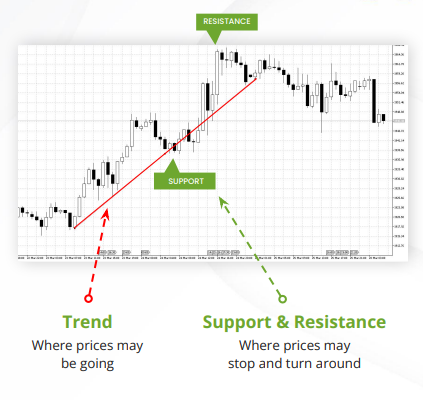
TRADING WITH THE TREND
The key to making money in Forex is
identifying trends and trading with it.
Trends tell you where prices will most
likely be going in the future.
If the trend of a currency pair is pointing
up, you need to buy the currency pair to
make money.

If the trend of a currency pair is pointing
down, you need to sell the currency pair
to make money.
If the trend of a currency pair is pointing
sideways, you either need to alternate
between buying and selling or wait until
the trend points up or down to make
money.
Whatever you do, never fight the trend.
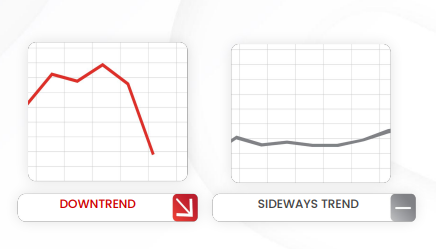
CHARACTERISTICS OF THE TREND
Trends do not move straight up or
straight down.
They usually move in one direction for a
while and then retrace part of the
previous movement before turning back
around and resuming the previous
direction.

Every time a currency pair turns around
and begins moving in the opposite
direction, it forms a new high or a new
low.
Identifying these highs and lows allows
you to identify whether a currency pair is
in an uptrend, a down trend or a
sideways trend.

TREND MOVEMENT
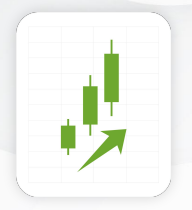
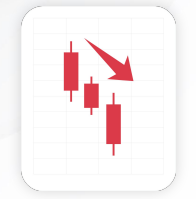
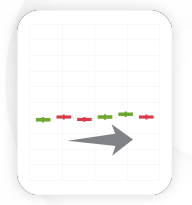
Up trends
Currency pairs that are
trending upward form
a series of higher highs
and higher lows.
Down trends
Currency pairs that are
trending downward form
a series of lower highs
and lower lows.
Sideways trends
Currency pairs that are trending
sideways form a series of highs that are at approximately the same price level and a series of lows that are at approximately the same price level.
TRENDS OVER TIME FRAME
Whether they are up trends, down trends
or sideways trends can form over various
time periods.
Identifying the following trends over each
time frame and being able to align them
in your analysis is crucial to your success
as a Forex investor:
- Long-term trends
- Intermediate trends
- Short-term trends
- Aligning trend time frames

LONG-TERM TREND
Long-term trends, sometimes called
major trends are those trends that have
dominated a currency pair for the longest
period.
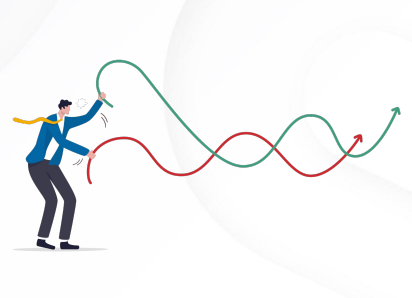
Looking at this chart of the XAUUSD, you
can see that the currency pair has been
rising in an uptrend from left to
right—notice the series of higher highs
and higher lows as time progressed.
Seeing this price action should give you a
bias toward buying the XAUUSD. If the
currency pair had been in a long-term
a downtrend, you would have a bias toward
selling the XAUUSD.
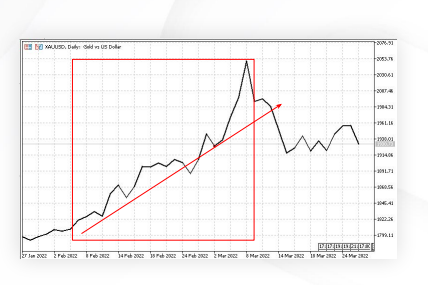
INTERMEDIATE TREND
Intermediate trends, sometimes called
minor trends are more responsive than
long-term trends because they cover
a shorter period of time.
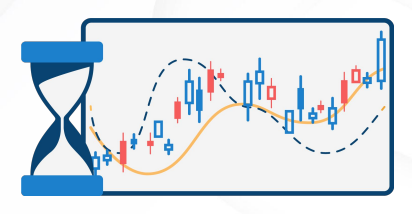
The currency pair was in a sideways
the intermediate trend during the highlighted
time frame—notice the series of level
highs and level lows as time progressed.
Notice that while the intermediate trend
was moving sideways, the long-term
trend was still moving upward.
Trends tend to move in a stair-step
fashion. Rarely do they move straight up
or straight down.
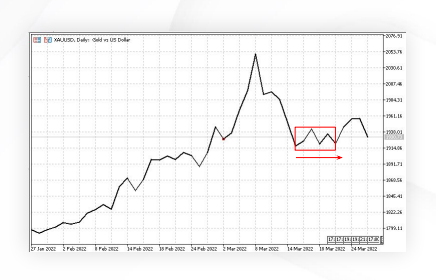
SHORT-TERM TREND
Short-term trends, sometimes called
micro-trends are more responsive than
both long-term trends and intermediate
trends because they cover the shortest
period of time.
These trends are the most volatile
trends and are predominantly affected
by the news of the day.
It is not uncommon to see these
short-term trends change direction
extremely rapidly.
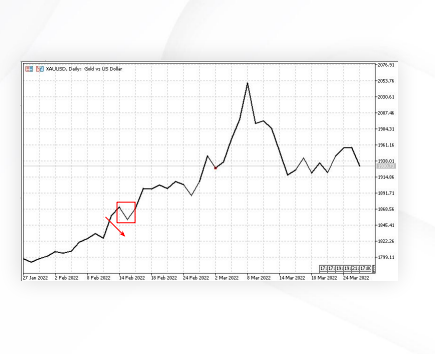
ALIGNING TREND TIME FRAMES
Your most profitable trading
opportunities will come when the
long-term, intermediate and short-term
trends are all lined up in the same
direction.
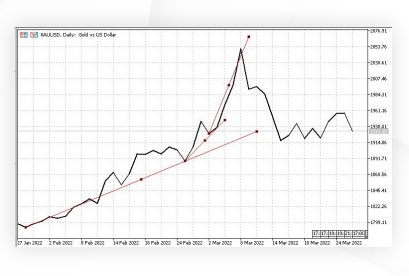
It is an excellent time to buy the currency
pair, when the long-term, intermediate
and short-term trends are all moving
higher.
When the long-term, intermediate and
short-term trends are all moving lower, it
is an excellent time to sell the currency
pair.

SUPPORT & RESISTANCE CONCEPTS
You will increase your trading profitability
if you can accurately identify levels of
support and resistance—areas where
prices may stop and turn around in the
future.

Resistance is a price level at which a
currency pair tends to stop moving up
and then turns around and starts moving
back down.

Support is a price level at which a
currency pair tends to stop moving down
and then turns around and starts moving
back up.





